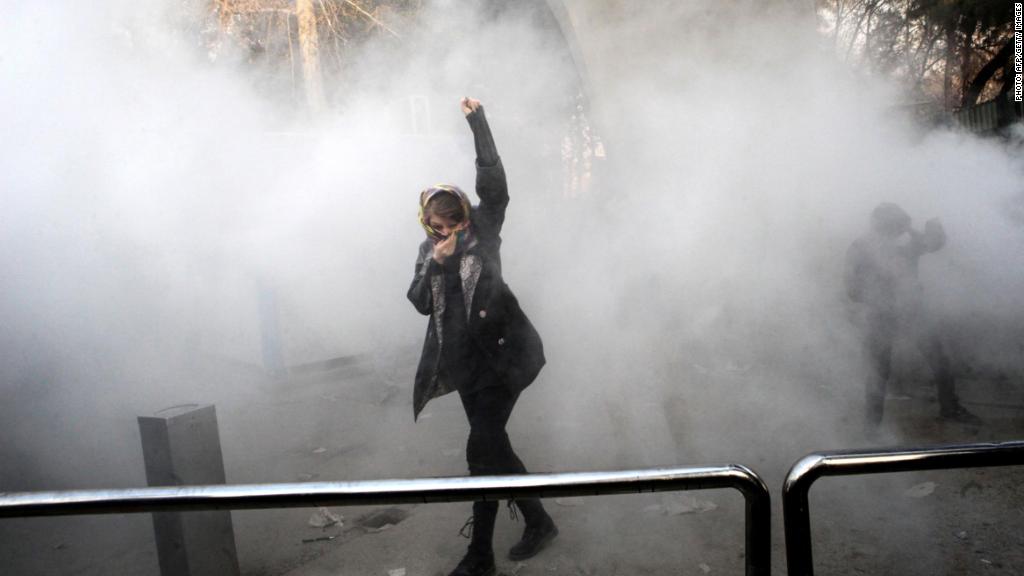The future of Iran
January 2, 2018 | Expert Insights

Anti-government protestors in Iran have reportedly attacked police stations in the country and have clashed with multiple security forces. At least 13 people have been estimated to have died as a result of the protests.
Economic discontent has sparked massive rallies across the region since December 28th, 2017.
Background
Iran became an Islamic republic in 1979, when the monarchy was overthrown, and clerics assumed political control under supreme leader Ayatollah Khomeini. Iran has been led by a highly conservative clerical elite since the revolution in 1979.
Modern day Iran is considered one of the most oppressive regimes in the world. The government of Iran has been criticized both for restrictions and punishments that follow the Islamic Republic's constitution and law. In 2016, the United Nations General Assembly approved a resolution expressing “serious concern” about Iran’s high rate of executions without legal safeguards, ongoing use of torture, widespread arbitrary detentions, sharp limits on freedom of assembly, expression, and religious belief, and continuing discrimination against women and ethnic and religious minorities, including Baha’is.
Hassan Rouhani won a resounding re-election victory in May 2017 as voters overwhelmingly backed his efforts to reach out to the world and rebuild the struggling economy. Growth has returned and inflation has fallen since Rouhani took office in 2013. The International Monetary Fund is projecting the economy to expand by 4.2% in the year to March 2018 -- it was contracting five years ago. Annual inflation has fallen to 10% from 34%. However, the quality of life for average Iranians continues to be poor. Youth unemployment is high, and a new budget shows subsidy for the poor being cut while the religious establishment is protected.
Analysis

Protests stemming from economic discontent erupted on 28 December 2017. Several crowds were seen protesting across Iran, including in Mashhad, the second most populous city. In addition, hundreds came to protest against the current regime in the country’s capital city of Tehran.
"On an expert level, and in the eyes of the International Monetary Fund, the Rouhani administration is conducting the right measures to strengthen the Iranian economy," said Adnan Tabatabai, the co-founder of CARPO, a think tank based in Germany. "But that does not mean that social justice is generated at the same time," he added.
The unemployment rate among those aged 15 to 29 is well over 24%. Violence has erupted in multiple pockets around the region. There have been reports of deaths due to the violence. As the anti-government protests continued to the fifth day, angry Iranians began attacking police stations. Estimates note that at least 13 people have been killed so far.
Hundreds have been arrested, according to officials and social media. Online video showed police in the capital Tehran firing water cannon to disperse demonstrators. “The government will show no tolerance for those who damage public property, violate public order and create unrest in society,” Rouhani said in his address on Sunday. However, he has admitted that economy needs to be reformed. "Our economy requires major corrective surgery," he was quoted as saying by Iran, a state newspaper. He said that unemployment rate should be addressed.
Israeli Prime Minister Benjamin Netanyahu praised the “brave Iranians”. He said, “I wish the Iranian people success in their noble quest for freedom.” US President Donald Trump has also voiced his support for the protestors through his official Twitter account.
Assessment
Our assessment is that despite large scale crackdown initiated by the government, protests have continued to grow. This is the biggest challenge Tehran has faced domestically in close to a decade. Unless social reform measures are introduced to ensure the quality of life among average Iranians, the government will not be able to sustain its power.








Comments